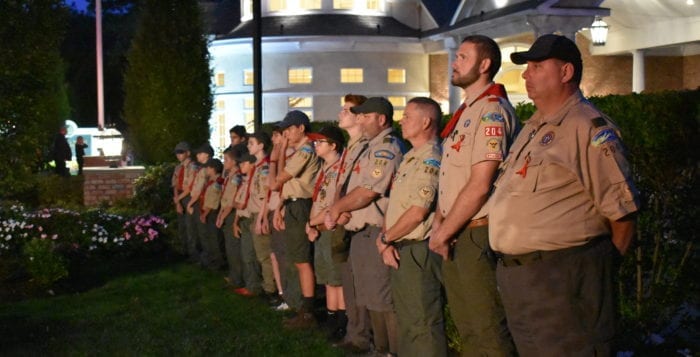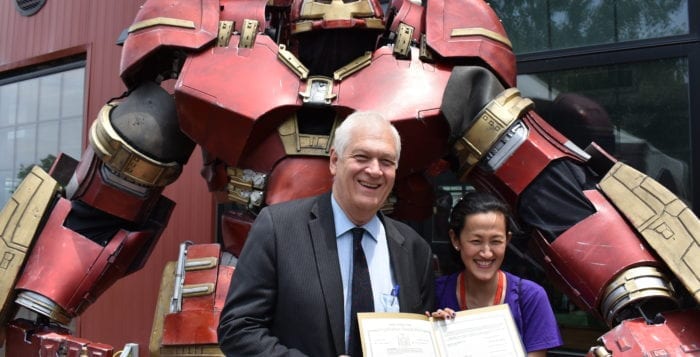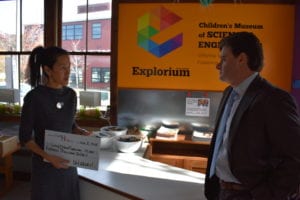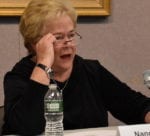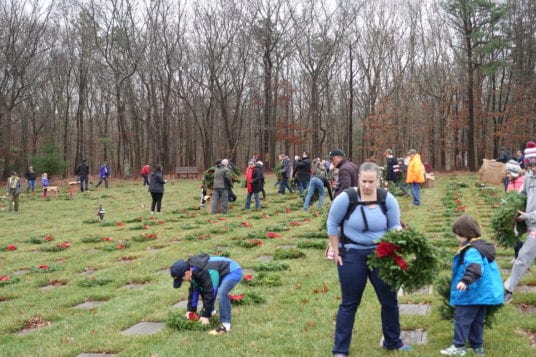By Melissa Arnold
All across Long Island, as Boy Scout troops gather for regular meetings, they reaffirm their commitment to the organization’s oath and law. Time and again, they promise to be loyal, trustworthy and brave and to “help other people at all times.”
Whether it’s running fundraisers, washing cars, visiting seniors or fixing up neighborhood points of interest, the Boy Scouts in local troops are often the driving force behind Suffolk County community service efforts.
Town of Brookhaven Councilwoman Jane Bonner (C-Rocky Point) and Suffolk County Legislator Sarah Anker (D-Mount Sinai) said they believe that all Scouts, boys and girls alike, stand as a positive example to our community, and that everyone should strive to join them in living a life of respect, leadership and helpfulness.
“The town always has a ‘wish list’ of projects we’d love to take on, but simply don’t have the funding for,” Bonner said. “The Scouts really complement the work that we do, but even beyond that, they make a tremendous impact in so many different areas of our community.”
Many of the organization’s service projects are dreamed up and implemented by the most senior Scouts, boys approaching their 18th birthday who are striving to obtain the highest rank: Eagle Scout.

In Miller Place’s Troop 204, anywhere from six to eight boys make Eagle Scout each year. The process is rigorous, and the Scouts run every aspect from initial planning and fundraising to completing the project and writing a final report. According to Scouting Magazine, less than 10 percent of all Boy Scouts go on to become Eagle Scouts.
“It’s great watching the boys come in as novices and grow and mature and become good citizens,” said Joe Argento, scoutmaster of Troop 204. “It’s special to see kids I’ve known since they were young go on to make Eagle.”
This year, the troop’s newest Eagle Scouts from Troop 204 protected wildlife at Cedar Beach with the installation of fishing line receptacles, made massive repairs to a large storage facility at Trinity Evangelical Lutheran Church in Rocky Point and spruced up the Miller Place signs and Center for Environmental Education and Discovery in Brookhaven, among several other projects.
While the Boy Scouts are known for serving their neighbors, they are also fiercely loyal to one another. The strength of those ties was on display this fall when Andrew McMorris, a Scout from Troop 161 in Shoreham, was struck and killed by an alleged drunk driver during a day hike in Manorville Oct. 1. Several other Scouts were injured in the episode as well. In the days after Andrew’s death, Scouts from across the region banded together to hang hundreds of red ribbons from Riverhead to Wading River and beyond.
On the day of Andrew’s wake, they came out in force to stand vigil for their brother. Troop 204 served as an honor guard.
“No matter what kind of Scout you are, it’s all one big family,” said Ann Colletta, membership coordinator for the Benjamin Tallmadge District of the Suffolk County Boy Scouts. “Troop 161 is very dear to Troop 204, and we all wanted to show them that we have their backs. It could have been any of us.”
The Scouts would go on to raise more than $20,000 for a memorial fund in Andrew’s memory that went to support Troop 161. In addition, the troop is raising funds to build a 3,200-square-foot Adirondack cabin at Baiting Hollow Scout Camp in Wading River, which will be named McMorris Lodge in honor of Andrew.
Scoutmaster of Troop 161 Matthew Yakaboski said the troop is only just beginning to heal after the tragedy in October, but they still have a long way to go.
“To have that life cut short like that is awful,” Yakaboski said. “We’re just trying to celebrate his life and do what we can.”
Along with the effort to build a cabin in Andrew’s honor, Troop 161’s scoutmaster said a number of their Scouts are planning several Eagle projects in the upcoming year, all of which will honor Andrew and the other Scouts injured on that day. One Scout is doing his Eagle project at the Robert S. Reid Community Center in Shoreham creating a paved brick patio and garden around a tree the troop originally planted in honor of Andrew. Yakaboski’s son, also named Matthew, is going to work on a project in conjunction with nonprofit Mothers Against Drunk Driving at the Jones Beach Theater. He will be renovating the area around a flagpole to create a brick path in the shape of a ribbon with each brick engraved with the name of people who have been killed or injured during DWI incidents.
Anker was quick to note that troop leaders and parents are also worthy of praise for the time, effort and support they contribute to the organization.
“We have to give the scoutmasters credit, too — they’re more than just leaders or supervisors. They’re true mentors and role models that challenge the Scouts to grow not just physically, but emotionally and spiritually. And when you have strong leadership in Scouts, it perpetuates strong leadership for the next generation.”
With additional reporting by Kyle Barr.

